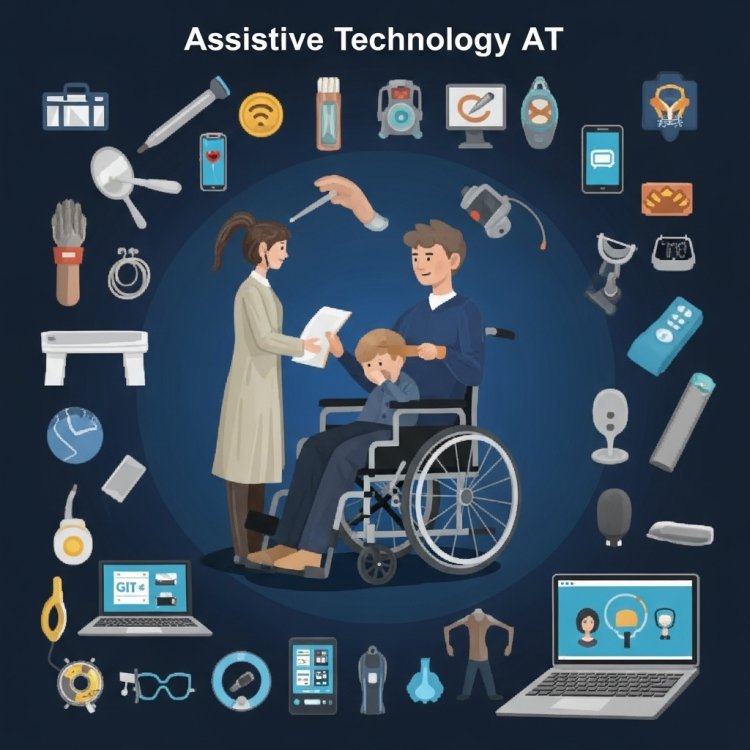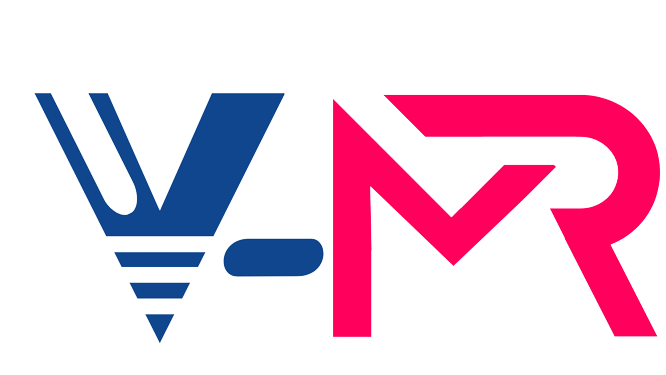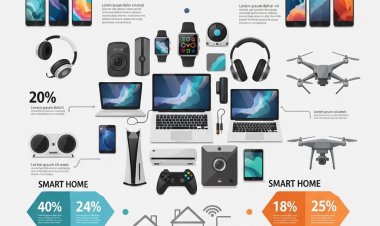Assistive Technology Market Trends, Growth, and Key Insights to 2030
Explore the global assistive technology market, including growth projections, key segments, major drivers, challenges, and the competitive landscape. Discover how innovations and demographic trends are shaping the future of assistive technology.

Assistive technology (AT) is transforming the lives of millions worldwide, empowering individuals with disabilities to lead more independent and fulfilling lives. As the global population ages and technology continues to advance, the assistive technology market is experiencing significant growth and innovation. According to analysts at Vantage Market Research, the global assistive technology market was valued at USD 21.95 billion in 2022 and is projected to reach USD 31.22 billion by 2030, growing at a compound annual growth rate (CAGR) of 4.5%. This article delves into the market’s growth projections, key segments, major drivers, challenges, and the competitive landscape, providing a comprehensive overview for stakeholders and industry observers.
Key Takeaways
- The global assistive technology market is expected to reach USD 31.22 billion by 2030, with a CAGR of 4.5%.
- Growth is driven by rising disability rates, an aging population, and rapid technological advancements.
- Key market segments include mobility aids, sensory aids, and cognitive assistance devices, with healthcare and homecare as dominant end-users.
- Major challenges include high device costs, limited accessibility, and regulatory complexities.
- The competitive landscape is shaped by leading players, technological innovation, and strategic partnerships.
Market Growth Projections for Assistive Technology
The Assistive Technology Market is on a robust growth trajectory, fueled by a confluence of demographic, technological, and societal factors. As of 2022, the market stood at USD 21.95 billion, and it is forecasted to reach USD 31.22 billion by 2030. This growth, at a CAGR of 4.5%, reflects both the increasing demand for assistive solutions and the expanding scope of what these technologies can achieve.
Get a Sample Copy:- https://www.vantagemarketresearch.com/assistive-technology-market-1786/request-sample
Several trends underpin this upward momentum. First, the global rise in chronic diseases and disabilities—whether due to aging, accidents, or congenital conditions—has created a sustained need for assistive devices. The World Health Organization estimates that over one billion people require one or more assistive products, a number expected to double by 2050. This surge in demand is matched by a growing awareness among consumers and healthcare providers about the benefits of AT, leading to higher adoption rates.
Technological innovation is another key driver. The integration of artificial intelligence (AI), the Internet of Things (IoT), and cloud computing into assistive devices has made them smarter, more user-friendly, and increasingly personalized. For example, AI-powered hearing aids can now adapt to different sound environments, while smart wheelchairs offer enhanced mobility and safety features.
Geographically, North America and Europe currently dominate the market, thanks to advanced healthcare infrastructure, supportive policies, and higher disposable incomes. However, Asia-Pacific is emerging as a high-growth region, propelled by large populations, rising healthcare investments, and increasing government initiatives to support people with disabilities.
Looking ahead, the assistive technology market is poised for continued expansion, with opportunities for innovation and investment across product categories and regions. The focus will increasingly shift toward affordable, accessible, and integrated solutions that cater to diverse user needs.
Key Segments of the Assistive Technology Market
The assistive technology market is highly diverse, encompassing a wide array of products and services designed to address various physical, sensory, and cognitive challenges. Understanding the key segments is essential for stakeholders aiming to tap into this dynamic market.
Product Type Classifications
The market can be broadly categorized into mobility aids, sensory aids, and cognitive assistance devices. Mobility aids include wheelchairs, scooters, prosthetics, and exoskeletons, which help individuals with physical impairments move independently. Sensory aids, such as hearing aids, cochlear implants, and braille readers, support those with visual or auditory impairments. Cognitive assistance devices, including communication boards, speech-generating devices, and specialized software, cater to individuals with learning or communication difficulties.
Dominant End-User Categories
Healthcare institutions, rehabilitation centers, and homecare settings are the primary end-users of assistive technology. Hospitals and clinics utilize AT for patient rehabilitation and long-term care, while homecare solutions are gaining traction as more individuals seek to maintain independence in their own homes. Educational institutions also represent a significant segment, particularly for children with learning disabilities who benefit from specialized software and devices.
Regional Market Insights
North America leads the global market, driven by high healthcare spending, robust insurance coverage, and a strong focus on inclusivity. Europe follows closely, with countries like Germany, the UK, and France investing heavily in assistive solutions. The Asia-Pacific region is witnessing rapid growth, especially in China, Japan, and India, where rising awareness and government support are boosting adoption rates. Latin America and the Middle East & Africa are also emerging markets, albeit at a slower pace due to economic and infrastructural challenges.
The segmentation of the assistive technology market highlights the vast potential for tailored solutions that address specific user needs, regional preferences, and evolving healthcare landscapes.
Major Drivers Influencing Market Expansion
Several powerful forces are propelling the assistive technology market forward, creating new opportunities for innovation and growth.
Increasing Incidence of Disabilities
The global rise in disabilities—whether due to aging, chronic diseases, or accidents—has significantly increased the demand for assistive devices. According to the WHO, over 15% of the world’s population lives with some form of disability, a figure that is expected to grow as populations age and life expectancies increase.
Aging Population Trends
The world is experiencing an unprecedented demographic shift, with the proportion of people aged 60 and above rising rapidly. Older adults are more likely to experience mobility, sensory, and cognitive impairments, making them a key demographic for assistive technology. Governments and healthcare providers are increasingly prioritizing solutions that enable seniors to live independently and maintain a high quality of life.
Technological Advancements and AI Integration
The integration of cutting-edge technologies such as AI, machine learning, and IoT has revolutionized the assistive technology landscape. AI-powered devices can now learn from user behavior, adapt to changing needs, and provide real-time feedback. For example, smart prosthetics can adjust to different terrains, while voice recognition software enables hands-free device control for individuals with limited mobility. These advancements not only enhance functionality but also improve user experience and accessibility.
Policy and Regulatory Support
Many governments are implementing policies and funding programs to support the development and adoption of assistive technology. Initiatives such as the Americans with Disabilities Act (ADA) in the US and similar regulations in Europe and Asia are driving market growth by mandating accessibility and inclusivity in public spaces, workplaces, and digital platforms.
Together, these drivers are creating a fertile environment for the assistive technology market to flourish, with significant benefits for individuals, families, and society as a whole.
Challenges Facing the Assistive Technology Sector
Despite its promising outlook, the assistive technology market faces several significant challenges that must be addressed to ensure sustainable growth and widespread adoption.
High Costs of Assistive Devices
One of the most pressing issues is the high cost of many assistive devices, which can be prohibitive for individuals and families, especially in low- and middle-income countries. Advanced technologies such as smart prosthetics and AI-powered devices often come with hefty price tags, limiting access for those who need them most. Insurance coverage and government subsidies can help, but gaps remain, particularly in regions with underdeveloped healthcare systems.
Accessibility and Awareness Issues
Many potential users are unaware of the range of assistive technologies available or lack the knowledge to select and use them effectively. This is compounded by limited distribution channels and a shortage of trained professionals who can assess needs and provide guidance. Bridging this awareness gap is crucial for increasing adoption rates and maximizing the impact of assistive technology.
Market Fragmentation and Regulatory Hurdles
The assistive technology market is highly fragmented, with numerous small and medium-sized enterprises (SMEs) operating alongside larger multinational corporations. This fragmentation can lead to inconsistencies in product quality, compatibility, and support services. Additionally, navigating the complex regulatory landscape—where standards and requirements vary by country—can be challenging for manufacturers and distributors. Harmonizing regulations and establishing clear quality standards are essential for fostering innovation and ensuring user safety.
Stigma and Social Barriers
In some cultures, stigma associated with disability can discourage individuals from seeking or using assistive devices. Overcoming these social barriers requires concerted efforts from governments, advocacy groups, and the private sector to promote inclusivity and normalize the use of assistive technology.
Addressing these challenges will require collaboration across sectors, investment in research and development, and a commitment to making assistive technology accessible and affordable for all.
Competitive Landscape of the Market
The assistive technology market is characterized by intense competition, rapid innovation, and a dynamic landscape shaped by mergers, acquisitions, and strategic partnerships.
Key Industry Players and Their Roles
Leading companies such as Invacare Corporation, GN Store Nord A/S, Sonova Holding AG, Sunrise Medical LLC, and Medtronic plc are at the forefront of the market, offering a wide range of products and investing heavily in research and development. These players are joined by a host of innovative startups and SMEs that are driving niche solutions and pushing the boundaries of what assistive technology can achieve.
Recent Technological Innovations
The past few years have seen a wave of technological breakthroughs, from AI-powered hearing aids and smart wheelchairs to wearable exoskeletons and brain-computer interfaces. Companies are leveraging advances in materials science, robotics, and digital health to create devices that are lighter, more durable, and more intuitive to use. The integration of telehealth and remote monitoring capabilities is also expanding the reach and impact of assistive technology, particularly in rural and underserved areas.
Mergers, Acquisitions, and Partnerships Trends
Strategic collaborations are becoming increasingly common as companies seek to expand their product portfolios, enter new markets, and accelerate innovation. Mergers and acquisitions are enabling larger players to consolidate their positions and achieve economies of scale, while partnerships with healthcare providers, research institutions, and advocacy groups are fostering the development of user-centered solutions.
The competitive landscape is also shaped by the entry of tech giants such as Google, Microsoft, and Apple, who are incorporating accessibility features into mainstream products and platforms. This convergence of traditional healthcare companies and technology firms is blurring the lines between medical devices and consumer electronics, creating new opportunities and challenges for the industry.
FAQs
- What factors are driving the growth of the Global Assistive Technology Market?
- How is the market for assistive technology projected to evolve by 2030?
- What is the significance of the Compound Annual Growth Rate (CAGR) in the context of the Assistive Technology Market?
- What types of products are included in the Global Assistive Technology Market valuation?
Conclusion
The assistive technology market is poised for significant growth, driven by demographic shifts, technological innovation, and a growing commitment to inclusivity. While challenges remain, the sector’s potential to transform lives and create value for stakeholders is immense. As the market evolves, collaboration, innovation, and a focus on accessibility will be key to unlocking its full potential and ensuring that everyone, regardless of ability, can participate fully in society.


















